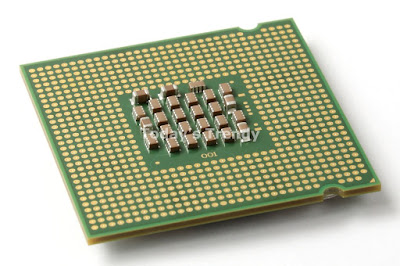Intel's dominance in the world of processors is well known. I'm sure, at least once in your life, you would have definitely used a computer powered by Intel. But what about smartphones? Well, their recently launched chipsets power your smartphones as well. Read on to know more.
The manufacture has launched a range of 6th generation processors, specially suited for mobile devices. The all-new Y-series, U-series, and H-series processors deliver a new class of computing with a host of new features to power the next generation of two-in-ones, notebooks, and other small form factor or mobile devices.
With all the amazing features claiming to improve the productivity and efficiency, I am sure Intel will make a mark in the world of mobile devices as well. After all, it is good to have Intel inside! One concern which I have is the absence of any hexa or octa core processor from Intel. Since Qualcomm already has such chipsets into the market, and they are already in use by the smartphone OEMs, I think Intel needs to soon join the bandwagon in order to compete.
The manufacture has launched a range of 6th generation processors, specially suited for mobile devices. The all-new Y-series, U-series, and H-series processors deliver a new class of computing with a host of new features to power the next generation of two-in-ones, notebooks, and other small form factor or mobile devices.
The family is comprised of processors that deliver a leap in performance and power efficiency, provide stunning visuals, and enable amazing user experiences when paired with Windows 10, the latest OS in town.
Y-series processors
This series includes the Core i7, Core i5 and Core i3 processors. Each of these is a dual core chipset, with double the effective processing threads (again thanks to Hyper Threading Technology).
U-series processors
This series includes the Core m7, Core m5 and Core m3 processors. Each of these is a dual core chipset, with double the effective processing threads (thanks to Hyper Threading Technology).
H-series processors
This series includes the Core i7, Core i5 and Core i3 processors. The first two are quad cores (with 8 effective processing threads). The Core i3 supports only two cores (4 threads).
Features of the new processors
A lot of useful features are provided. A few interesting ones are mentioned:
The new processors feature version two of the Turbo Boost Technology, wherein the frequency is dynamically modified as and when needed.
They also support the Hyper Threading Technology. This means that there are two processing thread for each physical core present on the chip. Hence, developers can write multi-threaded applications to efficiently utilize the cores and their extra threads, thus getting more work done simultaneously.
Then there is the Smart Cache. The total shared cache memory is allocated to each core at run-time, depending upon the need. This reduces the number of effective cache misses, in turn improving the performance manifolds.
They also offer improved security. In order to generate random keys for encryption/decryption, a special hardware-based number generator is used.
They also offer improved security. In order to generate random keys for encryption/decryption, a special hardware-based number generator is used.
In order to deliver the most out of the battery, Collaborative Processor Performance Control is deployed. It reduces active power to deliver improved battery life.
Smart Response Technology is used to reduce the waiting time, and allow the user to access files and applications with greater speed.
As far as applications are concerned, at least on paper, there is no doubt that these beasts can run any large or small app available as of today. Though, we'll have to wait and watch how they really perform.
As far as applications are concerned, at least on paper, there is no doubt that these beasts can run any large or small app available as of today. Though, we'll have to wait and watch how they really perform.
With all the amazing features claiming to improve the productivity and efficiency, I am sure Intel will make a mark in the world of mobile devices as well. After all, it is good to have Intel inside! One concern which I have is the absence of any hexa or octa core processor from Intel. Since Qualcomm already has such chipsets into the market, and they are already in use by the smartphone OEMs, I think Intel needs to soon join the bandwagon in order to compete.

0 comments:
Post a Comment